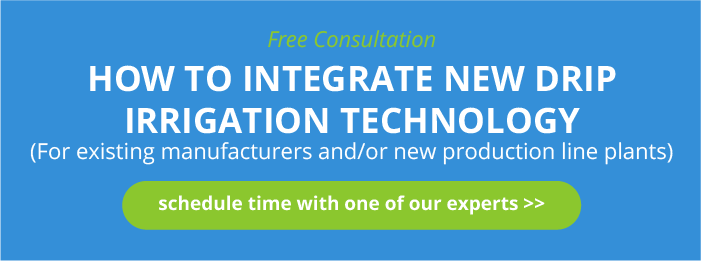Ethiopia is dotted with small farms, and agriculture is the industry which engages most of the population. However, many of these farms produce low yields due to drought, poor soil quality, and climate change. One way farmers can address these issues in a cost-effective manner is to invest in irrigation systems such as drip irrigation. Increasing drip irrigation in Ethiopia will bring water into the arid land, in turn increasing crop yields and ability to grow cash crops, as well as allowing smaller farmers to begin to build their farms into sustainable businesses.
High-value crops include fruit, vegetables, and flowers, all of which require additional irrigation to grow a market-worthy crop. Instead of unpredictable rain-fed systems or labor-intensive furrow irrigation, drip irrigation provides a reliable, accurate, and low cost solution that can be reused year after year. Drip irrigation works by running irrigation hose along the crop rows, with holes or drippers along the line to distribute water where it is needed. Farmers then run water through these lines, putting the water on the plants that need nutrition and not wasting any. This allows a small farm of a quarter of a hectare to become a business, producing surplus crop for sale.
With 14.5 million hectares of arable land, only 3.7% of which is currently irrigated, irrigation in Ethiopia is a market with considerable room to grow. The majority of farmers currently use the rainy season from June to August to water their crops, leading to only one harvest. Across the country, there is water available year round for use in other irrigation systems. Water can be pulled from rivers, lakes, and other bodies of water using lifting pumps and fed into efficient irrigation systems or raised from the ground using wells.
In areas where water supply is limited, it is beneficial to maximize the use of this resource by targeting irrigation to only those plants that need the benefit of the water. Additionally, drip irrigation systems can deliver fertilizer and other nutrients to plants exactly when it is needed. It can also help address pest and disease problems by delivering chemicals directly to the plants. Drip irrigation can help farmers customize their system to deal with the particular issues they face on their land and deliver the right mix of water and add-ins to their crops.
Governmental programs are available to help farmers and agricultural suppliers interested in investing in drip irrigation systems, including exempting VAT and duty on importing systems. Purchasing and importing high-quality drip irrigation into Ethiopia requires slightly less capital investment thanks to these programs.
DRTS is a provider of high-quality drip irrigation products. We also manufacture equipment for suppliers looking to tap into this growing market and create their own lines of drip irrigation products locally. With significant room for growth and government investment in education and incentives, the market for irrigation in Ethiopia is poised for success.






